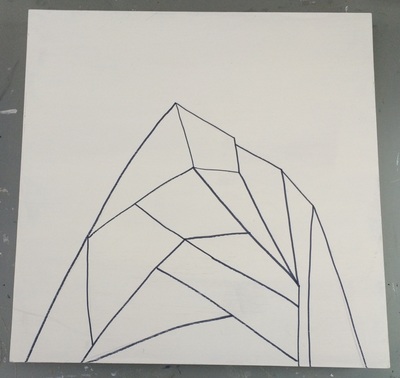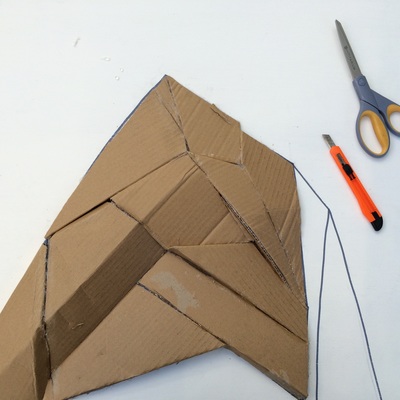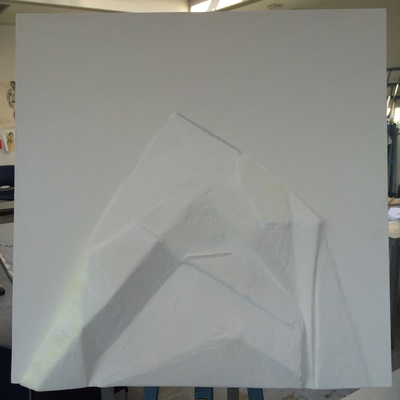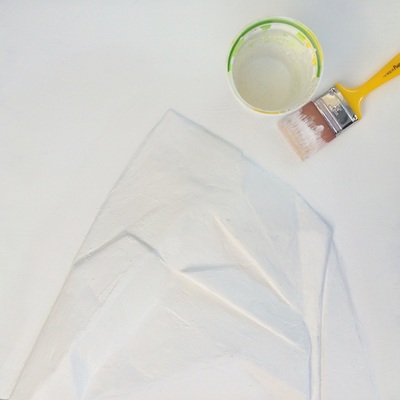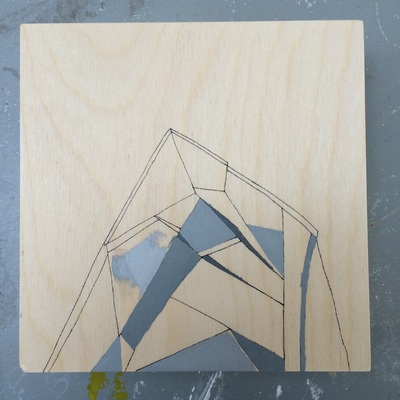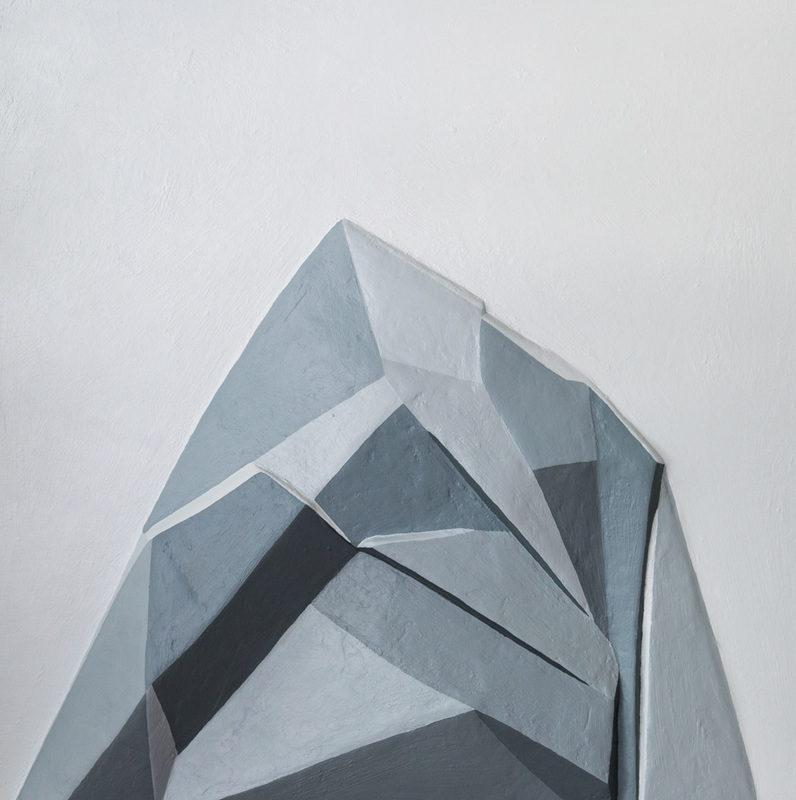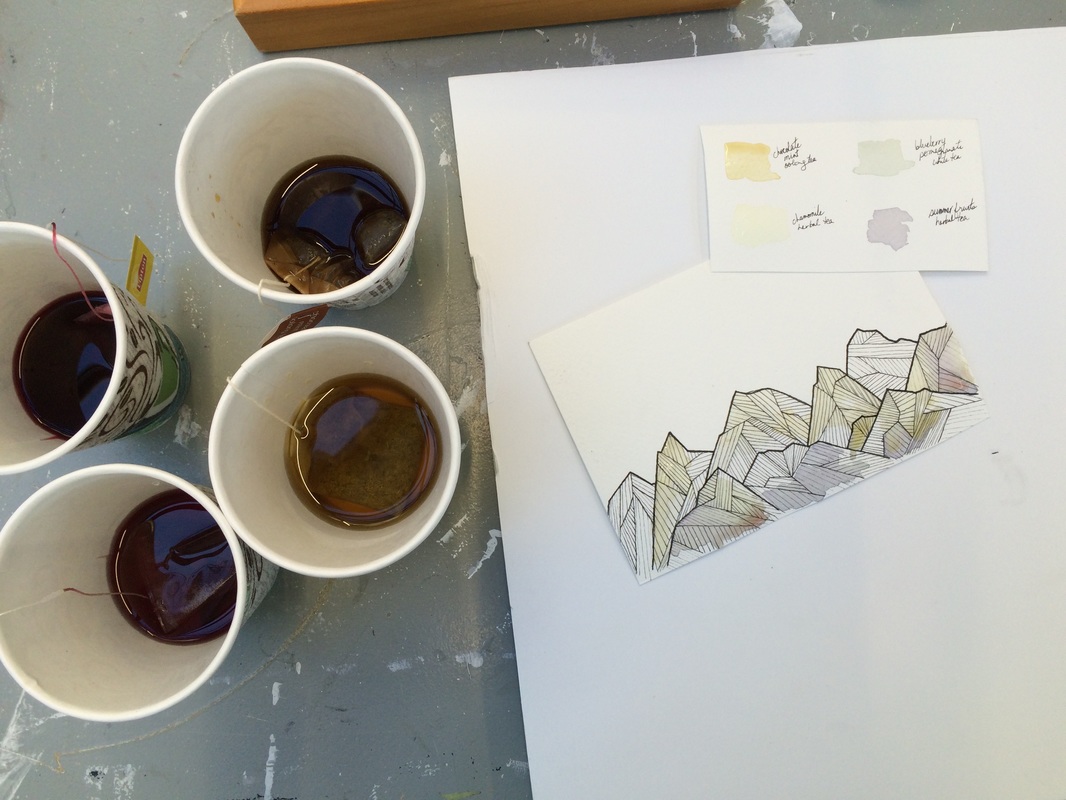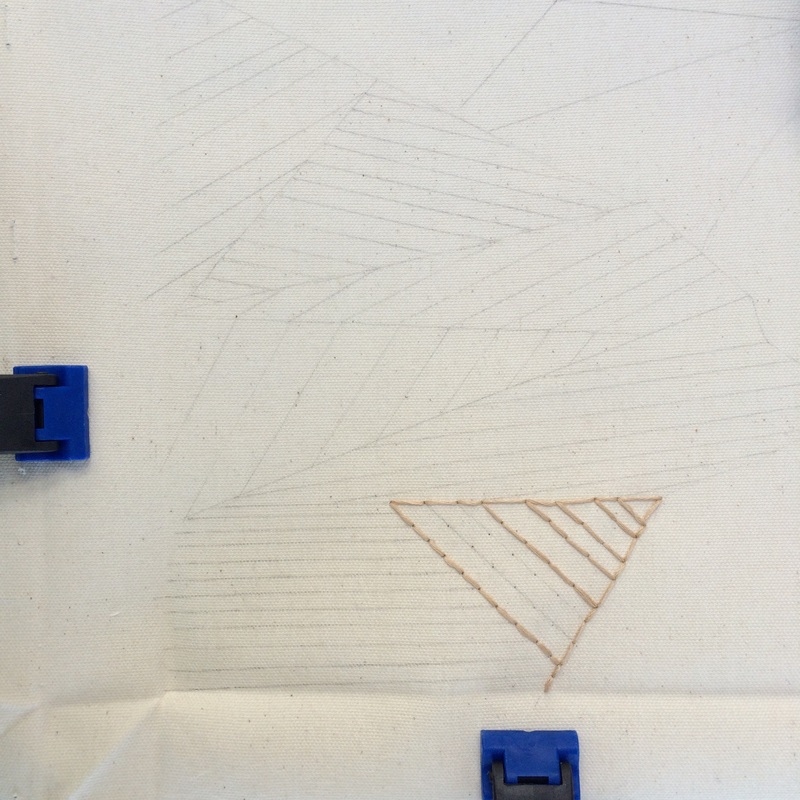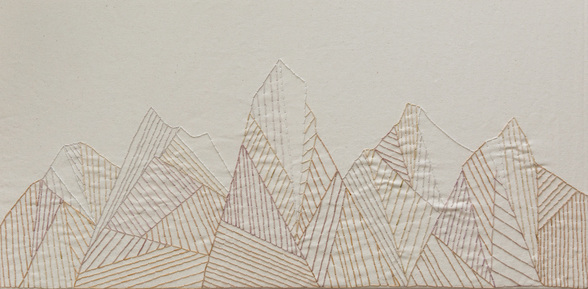|
In the midst of the tea mania, I began work on another part of the series. This is also the point where my "processing" theme came clearly into view. With so many ideas and directions swirling in my head - with limited time and a mentorship opportunity that I wanted to make the most of - I had to keep reining things in and figure out how it would all connect. This is where I decided that the work would be limited to the mountain and all other projects would be studies to assist these main works. (And I would revisit the other pieces after the residency.) This 3-dimensional project was quite thrilling to work on. I planned to create a miniature version as a test piece but soon realized that if I truly wanted to know how the materials would behave, I had to dive into the large piece. The miniature version emerged again about half-way through its big brother's completion. Using recycled cardboard, the mountain faces began to take form. Each piece of the puzzle measured, bent and formed into the next. It was taking shape as I had envisioned! I loved it just like this but knew it wasn't done yet. The next step was to seal the cardboard and prep it for its next layers. And here, my project underwent an overhaul. I loved the all white version and wrestled with whether or not to continue. But, realizing that I was facing the fear of ruining it, I decided to dive right back in. I wasn't here to play it safe. So, I dove in and... loathed how it was unfolding. Later that afternoon we had a small group critique and even after everyone's encouragement, I knew that I had to shift gears and immediately afterward began to therapeutically scrape off what I had done. (I hated it so much I won't even show you that mess!) Seeing the mountain range again in white, I had a personal artistic epiphany. I had an awareness of depth and light and shadows like never before. Everything came into focus. The miniature wood panel then became a study in gradient light and colour as I examined how the natural light hit and reflected off of the 3-dimensional work. After a study in mixing neutrals and creating a proper gradient (thanks, Alma!) each colour was mixed and applied based on the natural light study, but with a greater range. Here I had flashbacks to my time with "Foxy Loxy" where I would think I was finished but after the paint dried I'd see areas that needed touching up, wouldn't have enough paint to do so, and would have to mix more paint to match the first coats - another test of patience and precision!
I am so glad that I was able to discern what was fear and when to listen to that inner critic. Working in a studio with other artists this summer confirmed my suspicions that we've all got that inner chatterbox, critiquing and questioning things at every stage. It's hard to "unsee" your work, viewing with fresh and unbiased eyes... and it's very ease to rip it apart. But knowing when to listen to that voice and when to silence it is an integral part of the process. Having mentors and fellow artists to talk through the process is even better. Coming this week: part three of my artist in residency experience! I've just wrapped up Six Weeks In The Studio, a mentored artist residency through the Regional Municipality of Wood Buffalo. I had applied for the first session, that was to take place in May/June; which had to be cancelled due to our city's evacuation. When we returned I was given the opportunity to reapply for a revamped session and I'm so glad that, even in these crazy times, I jumped into it with both feet. It has been a most beautiful way to start anew. Two mentor artists, Alma Louise Visscher and Kritsana Naowakhun, offered group sessions as well as met with us one-on-one to challenge and refine us. I am so grateful for everything they poured into us as I took full advantage of this opportunity in front of me. Gleaning from artists I admire, as well as being able to get real-time feedback in the studio was invaluable. They both have a way in coming alongside of you, pushing us to be better but still allowing us to stay true to our artistic voice and vision. I came into the program with goals to explore light, shadows, depth and colour on a more intensive level. And with a short time frame, I knew I'd need to focus my projects as soon as possible so I could dive in and experiment but also know where I was headed. My artistic approach is much more thematic based, rather than medium based. I allow each piece to dictate the best medium to use - that freedom is incredibly fulfilling! Over the next days I will share the finished works, some works that never made it to the final exhibition and pieces of the process behind the scenes. I began to rework and experiment with ideas that I had been exploring over the past months, seeing where it would take me and running with the ideas that came to mind. "The process" became my guiding concept, with the mountain serving as my visual metaphor. My work is rooted in natural elements. My practice is in response to what, I believe, is an unfolding story revealed to us through Creation. Drawing inspiration from the natural world, I chose the mountain as my subject of study for this residency. Exploring a variety of techniques, the work was approached as a process, one work leading into the next; breaking a grand mountain range to its simplified forms. Through this process of fragmentation I explored simplified visual elements to approach each project from a different point of view. Throughout the creative process I found that I was drawn to natural and recycled materials, like tea and cardboard. The mountain was both an elemental study and a conceptual metaphor for working through and processing challenges we face. Early on, the house was filled with the aroma of hundreds of bags of tea being steeped for my artistic purposes. Embroidery thread was dyed in bowls of green tea and cider, berry tea and chai. More thread went for a dunk in simmering pots of dried chamomile and lavender flowers. The liquid was then poured into mason jars to be used to paint canvas and watercolour paper. (The flower liquid went rancid quite quickly... good to know.) Some of my experiments went along as planned or better - and others... well, they led to failure and frustration. But, as Alma encouraged me, sometimes the best art comes from the "failures". Problem solving and adapting to my natural medium's limitations caused some projects to be abandoned down the road and others to morph into something new. I love that about the artistic process. What resulted is the following two works, a small "watercolour" study using tea as the colour and a larger more intensive work, embroidering the dyed thread onto canvas. These two are available to purchase and on display at the MacDonald Island Community Art Gallery. Stay tuned for numbers 3 and 4 of the series! An essential aspect of creativity is not being afraid to fail. - Dr. Edwin Land |

